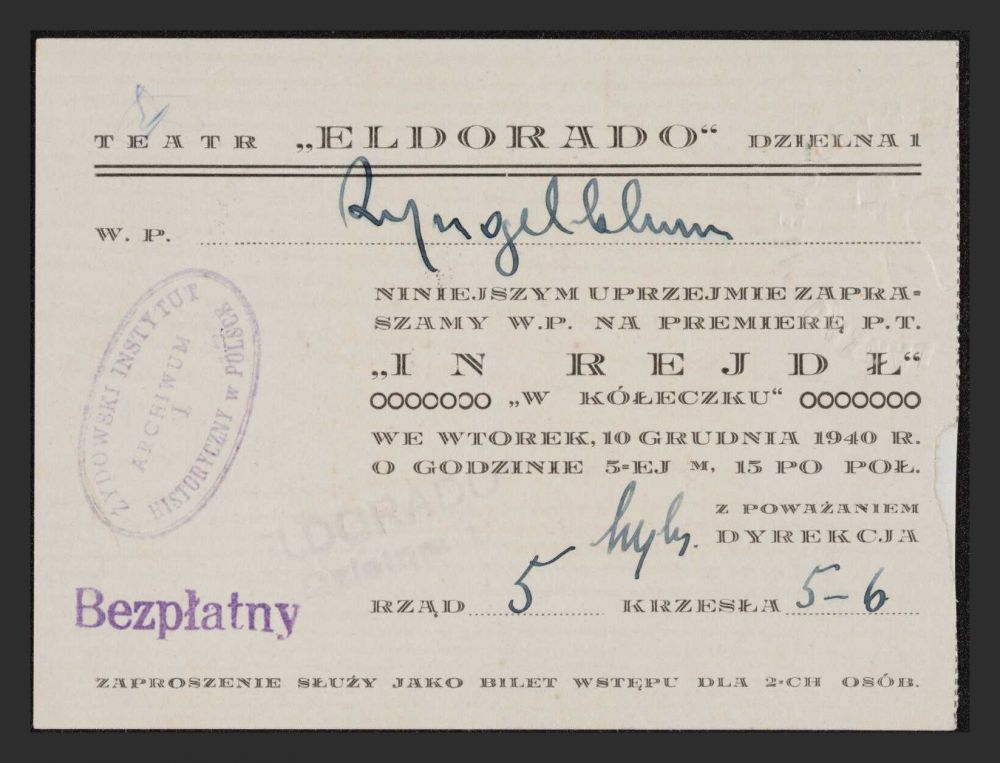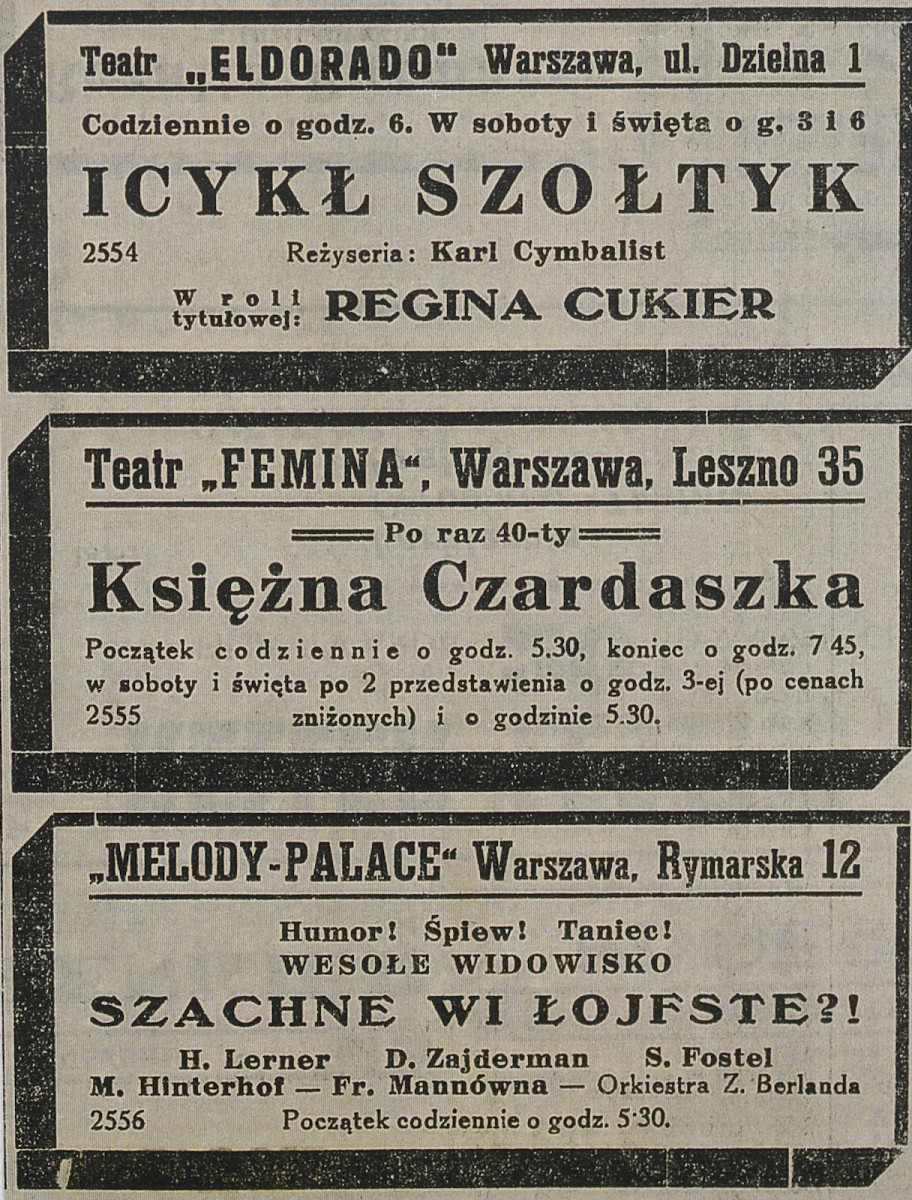- News
- Events
- Oneg Shabbat
- Collections
- Research
- Exhibitions
- Education
- Publishing Department
- Genealogy
- About the Institute
- Bookstore


On 10th December, 1940 at 5:30 pm, nearly a month after the creation of the Warsaw ghetto, took place the first theatrical premiere in the closed quarter: In Rejdł (In a circle). Eldorado Theatre at 1 Dzielna Street, which was staging the play, was the first officially opened theatre of the ghetto.
The two-hour-long performance in Yiddish was a comedy show: a combination of skits, songs, dances, recitations and one-act plays. Names of some of the actors taking part in the play are known to us: I. Wolfowicz, E. Milsztejn, A. Samberg, E. Goldenberg, Sz. Kutner, the others are falling into oblivion. Thanks to Herman Czerwiński’s review published in „Gazeta Żydowska” on 20th December, 1940, we also know the course of the show. The reviewer talks enthusiastically about the artistic level of the performance (”the show is well-thought-out and directed excellently). Emanuel Ringelblum, who attended the premiere (among the materials of the Archive there is a free ticket-invitation for two people under his name), is not that excited about the artistic level of the show. However, he emphasises its psychological virtue. The historian wrote in his Notes from the Warsaw Ghetto, „Yesterday, I went to the Jewish theatre. The level — average. [...]You want to run away from reality. [...] Within two hours, you forget about this pitiful world around us. There was only one current skit: criticism of „Joint”, The Jewish Community, etc " (pp.214). The play was extremely popular — it was staged for a year.
Eldorado Theatre was one of five, permanent theatres of the Warsaw Ghetto (3 staged in Yiddish, 2 in Polish), and the aforementioned show was only one of 68 performances, which had been staged till July, 1942. Only in Eldorado, 20 plays were staged, every month a new one was opened. Light, comedy repertoire was predominant. However, more ambitious plays were also staged in the ghetto. They especially included Jewish literature classics (among others, in Nowy Azazel theatre in Nowolipie St. or Nowy Teatr Kameralny in Nowolipki St., where well-known Andrzej Marek directed the plays). Because the tickets for the plays were relatively cheap (winter 1942 — about 2zl), very often the theatres were full, filled with audience who wanted to escape the ghetto nightmare even if for a moment. Theatre activities in the ghettos are a symbol of spiritual resistance, extraordinary vitality of the society which during horrible moments of its history testified to its fortitude. It is also a visible sign of dramatic contrasts of the ghetto world. Just next door to Eldorado theatre, at 3 Dzielna St., a place for refugees was opened, and at 39 Dzielna St. Główny Dom Schronienia [Main House of Refuge] operated, the biggest orphanage, where children dying of hunger were brought from the streets. The phenomenon of theatrical, or broader — cultural life in the ghetto is still waiting for its monograph.
